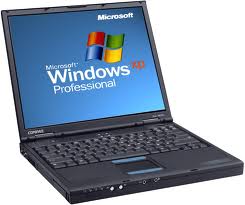I have a 6 year old laptop with Windows XP and 512mb ram. I would say it is running XP, but that would be a generous statement. It has XP installed (at factory default settings), but it is painfully slow. Not running anything. Maybe walking. When I do try to use this thing, it usually needs at least 90 minutes of intense hard drive activity (virus checking?) before it has time to do anything that I’d like to do. So it has been basically useless to me. Unless I really, really need Windows XP, I’ll just hop onto the Mac and get something done.
But I am a granter of second chances (and sometimes 10ths), and recently I noticed that this laptop does much better when the “Themes” are either disabled or set to “Windows Classic”, an appearance reminiscent of an older version of the Windows OS. However ugly, it is beautiful in the sense that it resolved several video display problems, and really made a major difference in perceived speed. If you have a similar problem you might try disabling the fancy theme and see if that helps. To do this; Start Button -> Control Panels, Appearance, & select Windows Classic Style. Apply.
![]()
While I was mucking about, looking for an reason as to why this particular pc was so dang slow, even though it was pretty much at factory defaults, I got annoyed enough to try something radical….
Ten years ago, I tried to install Linux on an old Mac (a Performa 6400 with a PowerPC 603e cpu). It was not easy and it was not very successful. So I left that alone and moved on. I don’t mind a good challenge, but I like it when things work (and that did not work).
Well, it seems that Linux has moved forward an enormous amount, and it is so easy now that you don’t even have to install it. Knoppix offers freely downloadable bootable CD & DVD disk images of a specialized GNU Linux OS including all the basic applications you might want. It is by far the easiest way to try a new OS on your computer, and it does not even change anything on your hard drive, so it is very safe to play around with. And if you are not ready to make the switch, your Windows is waiting for you when you decide to reboot from the usual hard drive.
I’m definitely no Linux expert, but here are some observations I can pass on:
Even though Knoppix boots up from a read-only cd or dvd, it is possible to save your preferences, configurations & work to a usb memory device, network drive, or elsewhere. Look for a menu item to “save a persistent ram disk”.
After you have set up that persistent ram disk, you’ll need to activate it at boot time. Knoppix will find it, and ask you if you want to use this disk image as your home folder. It may be obvious to frequent Knoppix or Linux users, but you’ll need to press the left arrow to select “ok” then press return. Merely pressing return will select “cancel” and your saved settings will not be used. Not what you wanted.
Some people prefer Knoppix version 5.1.1 over the newer 6.x versions. It seems to be a personal preference, but I did notice that Knoppix 5.1.1 (circa 2007) was able to correctly set the screen size to 1024×768, when 6 was not (800×600, leaving an unused margin). Small beefs for sure, but for a Knoppix beginner, these can be an important part of the experience.
The Knoppix CD includes a ton of stuff pre-installed, such as email, web browser, Open Office (word processing, spreadsheet, database, presentations, etc), disk utilities, screen saver, and a lot more. The Knoppix DVD contains all that and more. However, don’t assume that you will need the dvd, because the CD is very useful, and does have a lot of built-in software you can use right away. The DVD does have a whole lot more additional software that you may want to to check out later (and support for more languages).
I was impressed how easy it was to set up a printer & print to it. Printing worked the first time(!), and I was able to set up and print a test page to the printer in less than a minute. Even though this is a new OS for me, and I also had to find my way around. Gates & Co could learn a few things from this. It is not always so easy to set up a printer in Windows.
All the basic functions are ready to go, right at boot up. Some functions will not work until you enter a password for the Knoppix user or Root user first.
I wasn’t able to get a Netgear MA401 wireless pcmcia card to work, although I hear it is a common (but old) card well supported in Linux. I may look into “hostap” as it may be the ticket. On the other hand, I guess wireless internet doesn’t matter too much, this old laptop has a 10 minute battery life anyway.
I have been quite impressed with this little foray into an alternate OS. If your proprietary OS is bogging you down, it is free & easy to try out Knoppix.
UPDATE:
Ubuntu 10.04.1 also works really well as a bootable cd disk.
So does Lucid Puppy Linux 5.1.0 “LuPu” is designed for speed, and it is really quick! These are all free downloads, and free to use.
Update #2: Another alternate OS that some people are liking: Google’s Chromium on USB memory stick.



I don’t even know how I ended up here, but I thought this post was great.
I do not know who you are but definitely you’re going
to a famous blogger if you aren’t already ;) Cheers!